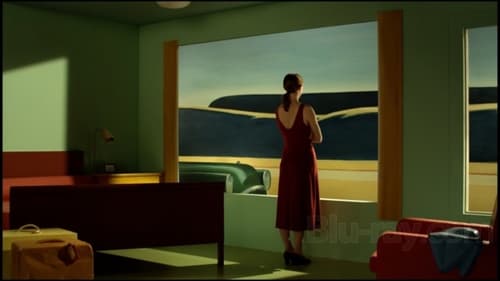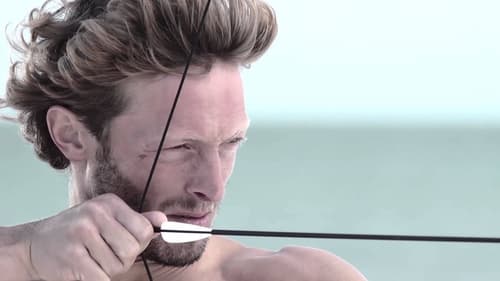Gustav Deutsch
Рождение : 1952-05-19, Vienna, Austria
Смерть : 2019-11-02
История
Austrian multidisciplinary artist, art director, and film director.

Director of Photography
Tradition and modernity, contrasting ways of life: the master of archival footage has assembled an impressive collection. His serene narration takes us inside the private lives of migrant families in different eras, from the beginnings of film to the present day. This new film from one of the great avant-garde directors is also a powerful tribute to a neglected genre.

Writer
Tradition and modernity, contrasting ways of life: the master of archival footage has assembled an impressive collection. His serene narration takes us inside the private lives of migrant families in different eras, from the beginnings of film to the present day. This new film from one of the great avant-garde directors is also a powerful tribute to a neglected genre.

Editor
Tradition and modernity, contrasting ways of life: the master of archival footage has assembled an impressive collection. His serene narration takes us inside the private lives of migrant families in different eras, from the beginnings of film to the present day. This new film from one of the great avant-garde directors is also a powerful tribute to a neglected genre.

Director
Tradition and modernity, contrasting ways of life: the master of archival footage has assembled an impressive collection. His serene narration takes us inside the private lives of migrant families in different eras, from the beginnings of film to the present day. This new film from one of the great avant-garde directors is also a powerful tribute to a neglected genre.

Director
Travelogues can also contain “mini-dramas”: this is what the “pocket films” of Notes and Sketches I (2005-15) reveal. Surprising behavioural
studies of man and animal, the hidden humour of nature’s phenomena as well as of automatized routines make good entertainment for your
home cinema and for all ages.

Editor
A series of snapshots from the life of a fictional actress named Shirley serves to weave together thirteen paintings by Edward Hopper (e.g. "Office at Night", "Western Motel", "Usherette", "A Woman in the Sun") into a fascinating synthesis of painting and film, personal and political history. Each station in Shirley’s professional and private life from the 1930s to 1960s is precisely dated: It is always August 28/29 of the year in question, as the locations vary from Paris to New York to Cape Cod.

Production Design
A series of snapshots from the life of a fictional actress named Shirley serves to weave together thirteen paintings by Edward Hopper (e.g. "Office at Night", "Western Motel", "Usherette", "A Woman in the Sun") into a fascinating synthesis of painting and film, personal and political history. Each station in Shirley’s professional and private life from the 1930s to 1960s is precisely dated: It is always August 28/29 of the year in question, as the locations vary from Paris to New York to Cape Cod.

Screenplay
A series of snapshots from the life of a fictional actress named Shirley serves to weave together thirteen paintings by Edward Hopper (e.g. "Office at Night", "Western Motel", "Usherette", "A Woman in the Sun") into a fascinating synthesis of painting and film, personal and political history. Each station in Shirley’s professional and private life from the 1930s to 1960s is precisely dated: It is always August 28/29 of the year in question, as the locations vary from Paris to New York to Cape Cod.

Director
A series of snapshots from the life of a fictional actress named Shirley serves to weave together thirteen paintings by Edward Hopper (e.g. "Office at Night", "Western Motel", "Usherette", "A Woman in the Sun") into a fascinating synthesis of painting and film, personal and political history. Each station in Shirley’s professional and private life from the 1930s to 1960s is precisely dated: It is always August 28/29 of the year in question, as the locations vary from Paris to New York to Cape Cod.

Director
Альманах, состоящий из шестидесяти кино-открыток длиной в одну минуту, которые сняли 60 режиссеров из разных стран мира. Проект разработан как ода 35-миллиметровой пленке и посвящен сохранению свободы мысли в кино.

Writer
Fragments of several (mostly) silent films are shown. They're guided by quotes from, among others, Plato and Sappho and a soundtrack.

Director
Fragments of several (mostly) silent films are shown. They're guided by quotes from, among others, Plato and Sappho and a soundtrack.

Director
Twenty-eight well-known filmmakers living and working in Austria were invited by WIENER MOZARTJAHR 2006, to produce associative miniatures on Mozart. Requirement: they had to be one-minute artistic short films. The directors come from a whole range of different backgrounds, ranging from animated, experimental and short film to documentaries and feature films. The result is a multi-facetted sampler of diverse formal and contextual positions with regard to Mozart’s person and his influence on today’s society, art and culture. The contributions run the gamut from experimental-conceptual statements through socio-critical and documentary observations to pithy short feature films.

Director
In Gustav Deutsch's most recent found footage work the masses "absorb" (Walter Benjamin), the artwork. Three historical camera pans across the streets and squares of Vienna, Surabaya, and Porto provide a starting point for reflection on the relationship of everyday stories and cinematic machinery.

Writer
A condensed omnibus of all twelve chapters of Film ist. by Gustav Deutsch. Chapters 1-6 consists almost exclusively, of sequences from existing scientific films, while chapters 7-12 is a collection of moving pictures from the first thirty years of a medium which was then still silent.

Director
A condensed omnibus of all twelve chapters of Film ist. by Gustav Deutsch. Chapters 1-6 consists almost exclusively, of sequences from existing scientific films, while chapters 7-12 is a collection of moving pictures from the first thirty years of a medium which was then still silent.

Director

Writer
The second half of Gustav Deutsch's experimental Film ist. series, constructing new narratives and moods out of existing footage, mostly from early silent era films.

Director
The second half of Gustav Deutsch's experimental Film ist. series, constructing new narratives and moods out of existing footage, mostly from early silent era films.

Sound
Film ist. 1-6 is an avant-garde collage from Gustav Deutsch, using found footage from various scientific films to explore the properties, impact and nature of film.

Writer
Film ist. 1-6 is an avant-garde collage from Gustav Deutsch, using found footage from various scientific films to explore the properties, impact and nature of film.

Director
Film ist. 1-6 is an avant-garde collage from Gustav Deutsch, using found footage from various scientific films to explore the properties, impact and nature of film.

Director
The pictures are burning. A house is in flames for exactly one minute. Cinema under attack: An anonymous fragment from the early days of film is turned into a reflection on reproduction and reality as well as on destruction which takes place on two levels through Gustav Deutsch’s reworking of the material.

Director
24 formula on the medium film. 24 sound quotes on film history. 25 frames of a blink of an eye. Cinema is a battlefield and an amour fou, a time between two blinks of the eye and an artificially delineated territory between two signal beeps. Commissioned as a Viennale-Trailer 1996.

Director
100 film loops for 100 film-viewers. Each loop deals with one basic aspect of repetition in life and film. The essential characteristics of each aspect become evident by endless repetition in the loop. "With the Pocket Cinema project I want to trace the repetitions in life and film as an attempt at the essential elements of film - motion and time.

Editor
Mariage Blanc in Morocco means a sham marriage between a Moroccan man and a European woman in order to obtain a residence permit and thereafter the citizenship of a European country. The theme of Mariage Blanc is this very intimate form of attempted immigration which is, for Mostafa Tabbou, simultaneously fiction and reality. The film was shot in three days in July of 1996 in the Hotel de Paris in Casablanca, Morocco.

Cinematography
Mariage Blanc in Morocco means a sham marriage between a Moroccan man and a European woman in order to obtain a residence permit and thereafter the citizenship of a European country. The theme of Mariage Blanc is this very intimate form of attempted immigration which is, for Mostafa Tabbou, simultaneously fiction and reality. The film was shot in three days in July of 1996 in the Hotel de Paris in Casablanca, Morocco.

Producer
Mariage Blanc in Morocco means a sham marriage between a Moroccan man and a European woman in order to obtain a residence permit and thereafter the citizenship of a European country. The theme of Mariage Blanc is this very intimate form of attempted immigration which is, for Mostafa Tabbou, simultaneously fiction and reality. The film was shot in three days in July of 1996 in the Hotel de Paris in Casablanca, Morocco.

Director
Mariage Blanc in Morocco means a sham marriage between a Moroccan man and a European woman in order to obtain a residence permit and thereafter the citizenship of a European country. The theme of Mariage Blanc is this very intimate form of attempted immigration which is, for Mostafa Tabbou, simultaneously fiction and reality. The film was shot in three days in July of 1996 in the Hotel de Paris in Casablanca, Morocco.

Director
A film-experiment in six hundred takes, three seconds each, of a European's private images in Africa and of an African's images in Europe. A mutual perception of the one's and the other's native place.

Director
ADRIA is an artistic analysis of film as a medium and of its meaning as SCHOOL OF SEEING. The subjects of this analysis are the beginnings of the Austrian hobby and amateur film creation, restricted to holiday movies from the Adriatic Sea. The footage was analyzed according to set focal points (image detail, camera movement, etc.) then dissected according to serial aspects (tracking shots, pans, etc.) and edited into new sequences (descriptions, reactions, etc.)
These sequences are liberated from their individual isolation and unified in a sequence that reflects the general situation. This general situation reflects upon two aspects. One is the first active involvement with film as a medium - in front of and behind the camera - and the other aspect highlights social contexts such as the first holiday abroad and organizing one’s leisure time.Therefore the private depiction of an individual situation becomes a document of a general situation.

Writer
Experimental film about a voyage to the north pole.

Director
Experimental film about a voyage to the north pole.

Director

Director





























